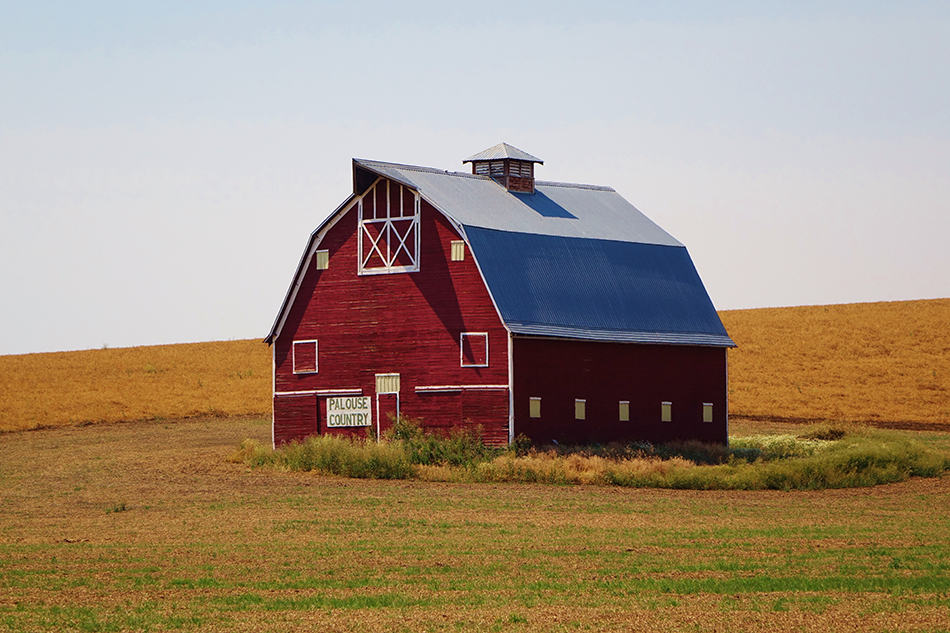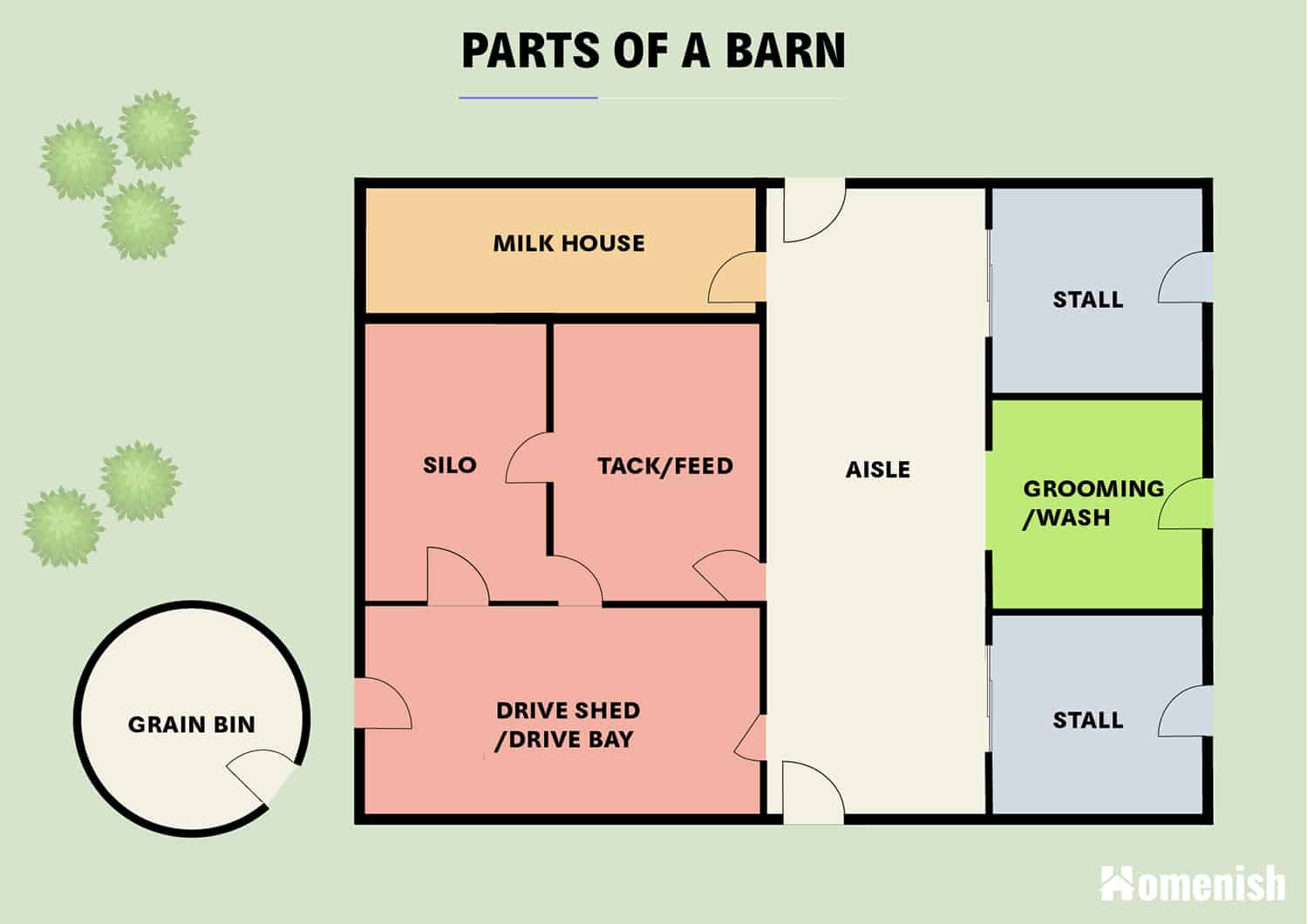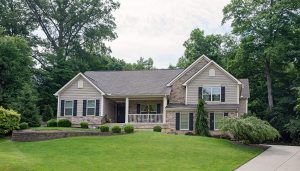Barns were a lot more popular in the past than they are now, so a lot of people these days might not know a lot about them. Barns are constructions erected to store agricultural products, like fruits, hay, and grain.
They are also used to shelter livestock, like sheep, horses, and cattle. Barns could have different types of structures depending on what’s going to be stored in them. In parts of the country where fruit farming is popular, you’ll find lots of barns built specifically for fruit storage.
On the other hand, in parts where livestock farming is popular, you’ll find barns built for animals, hay, or diary storage.
There are also barns built for multi-purposes; these are called general-purpose barns and are used to store farm products and livestock. Sometimes these general barns are used to store turkeys, chickens, sheep, hogs, workhorses, and cattle.
You can also find bins of grains in them, alongside other vegetable products. These days, one of the most commonly stored farm products in barns is hay; they are usually heaped up in areas known as mows. You can also run into a converted barn, which is also called barndominiums.
Most barns have similar parts, and they include the following:
Parts of a Barn
One farm may have rooms of various shapes and sizes of rooms that are used for storing large and small animals and storing food items, while another farm may not.
Also, some barns have multi-levels, depending on their purpose. Common parts of a barn include:
Stalls
These are individual enclosures for an animal in a cowshed or stable. They are typically enclosed on three sides and depending on the kind of barn, you’ll find them on the main level or the cellar.
Tack Room
Every barn, no matter its size, needs a tack room. It’s a room used for the storage of bridles, saddles, and other equipment in a manner that they are safe and organized. Building a tack room requires a lot of planning.
The perfect location for a tack room minimizes the number of steps one takes to get the horses ready
Feed Room
As the name implies, a feed room is a room for storing animal feed. Modern-day barns now have stack yards for this purpose but older barns had feed rooms just the size of a box stall for storage of feed.
Feed rooms are organized for convenience and easy cleaning. Feed materials, equipment, and tools are neatly stored here in an organized pattern, allowing workers to move freely and reach things in the room without any interference.
Feed rooms are kept dust-free to ensure that feed is uncontaminated. Grain feed is usually stored in rat-proof containers. These could be metal or wooden containers with tightly fitted lids. Feed rooms are well-lit and built with easy-to-reach outlets.
Their entrances often have a latch so that stray animals do not wander into the feed room and help themselves. The size of a feed room depends on the number of animals a farm has to feed.
Drive Shed/Drive Bay
These are wide corridors for the storage of animals or machinery. When carts of hay are brought in to offload, they end up at the drive bay. You’ll also find some machinery parked in the drive bay, such as driving lawnmowers and walk-behind tractors.
Sometimes you’ll find the farm’s hand tools organized on the back wall of the bay. Drive bays are often used to store bagged compost; farmers also thresh grains here and husk their corn.
One benefit of having a drive bay is that it keeps equipment accessible and easy to find. During the growing season, tools in constant use are stored here to make them easy to find when needed. These sheds protect your important equipment from the weather and give the barn an overall accessible layout.
Silo
A silo is an airtight construction built to hold hay or fermented grain that’s used to feed animals during the winter. Silos are constructed using different materials; the most preferred include a unique curved brick, galvanized iron, hollow tile, and poured concrete.
In the past, silos were sometimes placed inside the barns. Things you can find stored in a silo include chopped or shredded grass, corn, and occasionally other types of plant material. These materials ferment into very nutritious feed for animals in the winter.
In the past, the storage of foods in silos has led to considerable improvement in the productivity of animals. Silos are either shaped vertically or horizontally. Horizontal silos were the first silos, they were rectangular shaped, made of wood, and built inside the barns.
They were quickly replaced by round vertical silos which were built outside the barn. Vertical silos were built in spots that allowed for efficient filling. The silos are filled from a hole at the top and unloaded from a row of doors from which fodder was thrown down an external chute; this chute had a ladder by which one could access the doors.
Milk House
Milk houses are an important part of dairy barns; in this attached structure, milk is collected and stored before its shipment. Milk is not stored together with barn animals because milk easily takes the odor of barn animals.
Grain Bins
These are different from silos, firstly because they are used to store dry grains while silos store fermented pasture. They are metal cylinders with pointed metal roofs and they have staircases on the exterior.
Grain bins are wider in diameter than silos and are usually made with silver corrugated steel. They come in varying heights.
Roofs
No barns are completed without a roof. There are no set rules for a barn-roof style. But some of the most popular are the gambrel dormers, shed, and hip roof. And depending on the budget and liking, you can choose the roof construction from some materials, such as metal, asphalt, wood shingles, and so on.







